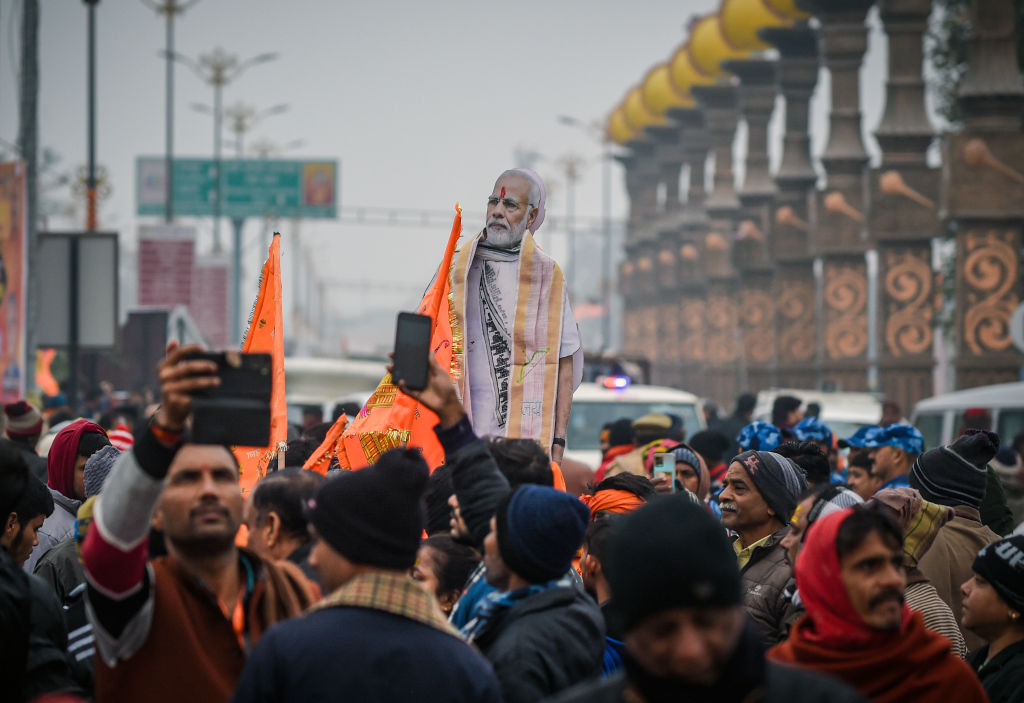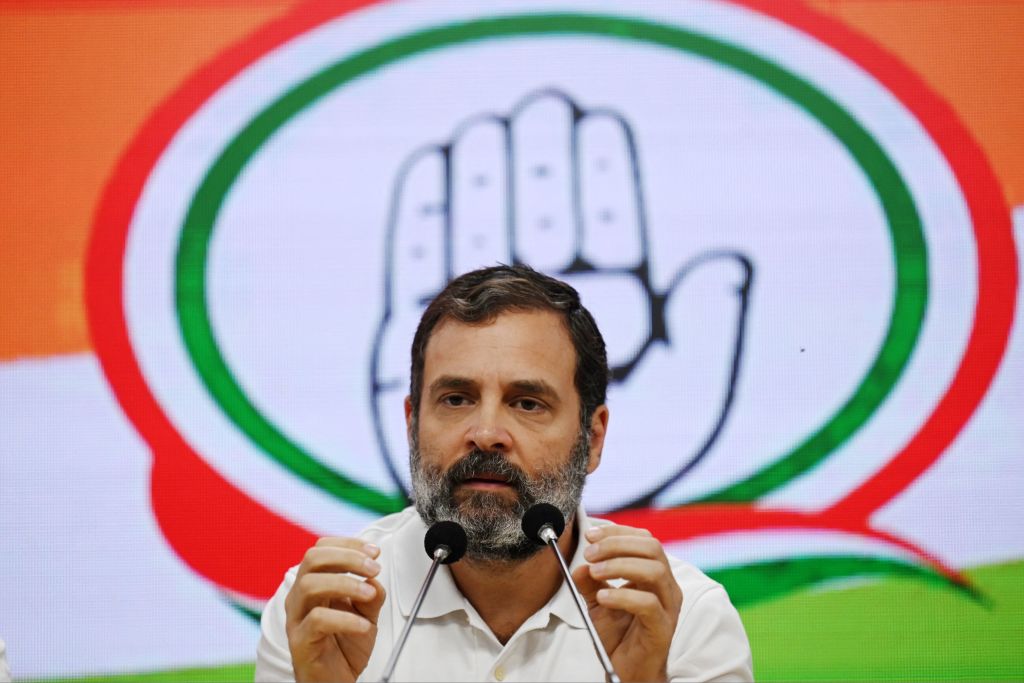- Saturday, July 27, 2024
The Indian prime minister has constantly evolved himself, even after he landed in Delhi from Gujarat, and never pursued a one-point agenda to establish his legacy. The opposition’s story has been completely opposite.

By: Shubham Ghosh
IT is only a matter of time before the Election Commission of India announces the schedule for the 2024 general elections. The ruling Bharatiya Janata Party (BJP) of prime minister Narendra Modi is certain about a third straight term. The PM has asserted India will become the world’s third-largest economy during his third tenure. The inauguration of the Ram temple in January made the opposition strongly believe that a political project was being given the final touches to reap electoral benefits. Whatever the charges are, there is clearly no resting time in the ruling dispensation’s plan of actions in the run-up to the polls.
It is incredible how the Modi government is ridiculing the anti-incumbency factor even after 10 years in power. In comparison, the opposition Congress’s former United Progressive Alliance government led by former prime minister Manmohan Singh was in doldrums by the time it was 10-years old, back in 2014. Even months before the elections, it was becoming clear that the Hindu nationalist BJP, re-energised by Modi, was on its way to win power and it did.
Again, when we compare the state of the opposition in 2014 and 2024, a massive dissimilarity is visible. While the BJP in 2014 managed to convince the countrymen that a change was needed in New Delhi to give the nation a new direction after the Manmohan Singh government wobbled towards the end of its second term, the opposition in 2024 is as hapless as it was after Modi ascended the throne a decade ago.
Read: India needs a strong opposition: Modi in scathing attack in parliament
A major reason for such differences in the state of affairs in Indian politics between 2014 and 2024 is that Modi has never allowed his government to stagnate, something that Singh struggled to do. There might be allegations against the current prime minister and his party of suppressing minority voices and allowing an aggressive variant of Hindu nationalism to dominate every aspect of Indian life but there is no denying that Modi has succeeded in mainstreaming the Hindu identity in India’s national socio-political life today.
Read: Why Modi govt did not go for populism in pre-poll budget? Finance minister explains
But Modi has not made his stay in power a one-point agenda either. While working towards fulfilling the BJP’s decades-old political goals such as abolition of Article 370 related to Kashmir or building the Ram temple, the prime minister has put equally sharp focus on the economy, foreign relations and even things such as space exploration. While his critics might accuse him of posing too much for the cameras, but Modi has ensured that the visibility of his positive body language never fades from public memory. It’s an everyday routine and he has done it without a minute’s fail.
It is surprising how Modi has dominated the corridors of power in Delhi despite not being a part of it during his evolutionary days. He parachuted into the parliament as an MP straight from Gujarat and has run the show the way he did in Gandhinagar where he was undefeated between 2001 and 2014 – the years of his chief ministership. He won the national elections from Varanasi, one of the top centres of Hindu identity, for two successive times and none, including Uttar Pradesh’s local political players, could stop him.
The reason for this relentless and unchallenged ascent of Modi is his capacity to constantly re-invent himself. Recently, while explaining the ‘secret sauce’ of Brand Modi, India’s master political strategist Prashant Kishor told veteran journalist Rajdeep Sardesai in an exclusive interview that the leader constantly evolves.
“Mr Modi’s strength is that he evolves. His whole agenda also evolves every five years. In 2002, he was the Hindu Hriday Samrat. In 2007, he became an able administrator who could bring development to Gujarat. By 2014, he evolved as somebody who can change India. By 2019, he evolved as somebody who can bring great pride and courage and conviction in the story of India. By 2024, he is positioned as somebody who has brought Ram back to this country,” he said.
But Modi, who worked as an administrator of one of India’s progressive states before becoming the PM, knew very well that just pushing the aggressive breed of Hindu nationalism would not lengthen his legacy, something that the politician in him craves for. He, therefore, aligned the main agenda with other significant ones, including economy, social welfare and foreign affairs and Indian diaspora – all of which eventually became subservient to the huge and high-flying banner of Brand Modi.
In fact, through many of his government’s actions, Modi has given a message that while the Hindu factor remains, it is restoring the ‘Indianness’ of India which he is mainly striving for. There is perhaps no better way to hyphenate majoritarian sentiments with nationalism, a virtually unchallenged force in the era of de-globalisation, and create an unbeatable electorally viable force.
As an outsider in Delhi, Modi also devised ways so that he did not get buried under the avalanche of potential conspiration by an unfriendly media. In his earlier days as an office-holder, Modi was mostly in the headlines because of the 2002 pogroms in Gujarat. The Delhi-based opponents also snubbed his rise and needless to say, there were voices that emerged against him even within his own party which was evident in the drama that unfolded when he became the prime ministerial candidate of the NDA in 2013 for the general elections that followed.
The iron-willed Modi decided to shun the mainstream media but at the same time, started communicating directly with the people with the help of technology – be it through X (formerly Twitter), his own website, radio programmes and above all, rallies. It is astounding how many public rallies and programmes the prime minister attends during state elections or even when there is no election. His determination to keep the image of his government clean and allocating portfolios to leaders who might not be those with a mass base but are known for their educational backgrounds and hands-on expertise have also convinced his constituencies that here is a PM who is serious about doing the nation a favour.
Take for example, the appointment of Subrahmanyam Jaishankar, a diplomat, as the foreign minister or Aswhini Vaishnaw as the IT, electronics and railway minister. They are candidates who do not give an iota of the impression that these key ministries are sacrificed at the altar of politics, something that India often witnessed in the past. The result: Less chances of politics being reduced to a circus and more power to Brand Modi.
But Modi also had has his share of good luck. He took over at a time when India is on an ascending curve. Given the country’s huge affluent middle-class and market potentials and the world’s growing suspicion of China, the current government is at an advantage of reaping maximum benefits. The West is under much pressure to find a new direction to their economies in the wake of the growing tensions with China and Russia, and India has emerged as a natural beneficiary and can afford to evade momentary glare from the human-rights obsessed western democracies for allegedly suppressing minority sentiments.
The flourishing Indian diaspora and the growing menace of Islamic radicalism also makes Modi’s India a symbol of greatness and resistance. For those who suspect India’s growing camaraderie with Israel since it has not happened historically, it is nothing but the Modi government’s realpolitik. Like Israel, India is also surrounded by a number of enemies and hence requires allies and ammunition for a glorious survival.
As against these factors that go in Modi’s favour, let’s turn the eyes to the opposition. There is no doubt that they are trying their best to do well in the 2024 elections after two successive humiliating defeats. In 2014, the BJP too had a similar challenge. After losing the 2004 and 2009 elections, the party was at a loss of direction as the veteran duo of Atal Bihari Vajpayee and Lal Krishna Advani were ageing with no immediate successor in sight. But the saffron party found its much needed answer in Modi and the rest is history.

The opposition alliance, which took the name of INDIA (Indian National Democratic Inclusive Alliance), has not succeeded in replicating what the BJP did in 2013-14. In fact, the situation is looking worse with each passing day. The exit of Nitish Kumar, an influential leader, from the bloc and alienating words from regional parties such as the Trinamool Congress and Aam Aadmi Party suggest that the forum is still without unity. A drastically weakened Congress still wants to dominate the bloc but regional parties that have reduced it to the fringe in their respective states are in no mood to cede territory. The Rahul Gandhi factor has not just hurt the opposition’s prospects of projecting a viable face, but also rattled the projected unity behind the doors.
While these are more poll-time chemistry and arithmetic that are being scanned, the actual problem with the anti-Modi parties is that they are not evolving, unlike the PM. The Congress and its leaders are still trying to project the election on the binaries of secularism versus communalism or democracy versus dictatorship or rich versus poor or corruption versus honesty and Modi as a villain. This will simply not work anymore in Indian politics today.
Secularism is dead as dodo and Modi’s style of governance is something that the Hindu majority of India is appreciating today, democracy or dictatorship notwithstanding, resembling the popular regime of Indira Gandhi. Modi’s social welfare schemes and presenting a government with a transparent image also nullifies the rich-poor and corrupt-honest debates.
As the main opposition, the Congress needs to rethink something on the line of majoritarian politics. The caste census was a comparatively sound strategy as that could potentially cause a crack on the Hindu vote-bank of the BJP. But Modi’s master stroke of giving Karpoori Thakur, a social justice icon the Bharat Ratna award and Nitish Kumar’s exit from the INDIA bloc, reduced its significance. Yet, the opposition can still try out those strategies instead of making a futile attempt to reverse India’s politics to the 1980s and 1990s.
There is no denying that the grand-old party’s flirtation with Hindu votes in the 1980s helped the BJP to rise to the height it has reached currently. Carrying the baggage of secularism, it was difficult for the Congress, if not impossible, to indulge in Hindu appeasement and instead got accused as somebody who appeases the minorities. The party needs to rethink its politico-religious strategy today. Boycotting the Ram temple inauguration would not help. The temple might be a political project that its story also has an economic side – generating tens of thousands of employment in the once sleepy town of Ayodhya. The opposition parties need to focus on administrative effectiveness and think out innovative ways of Hindu-centric politics.
India, under Modi, has changed and he cannot be defeated with outdated politics.